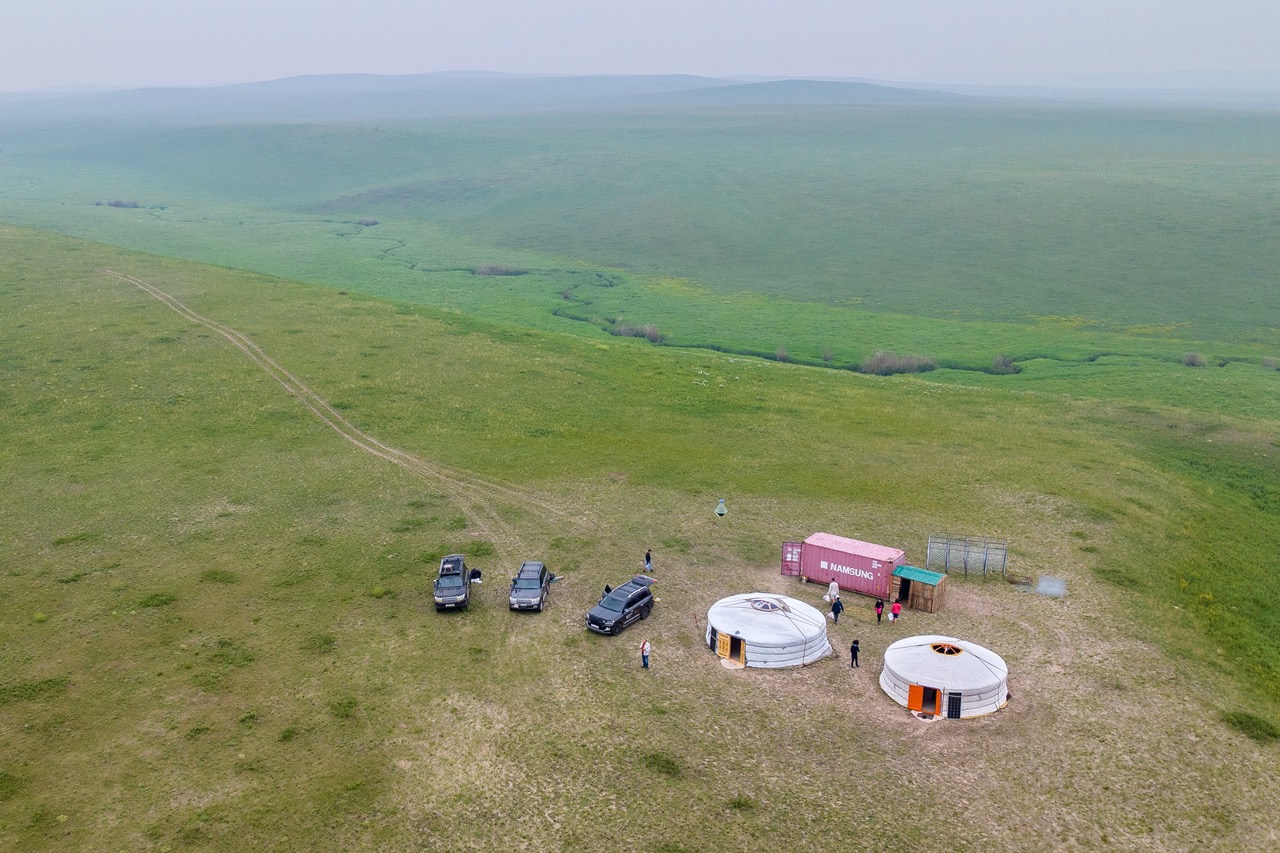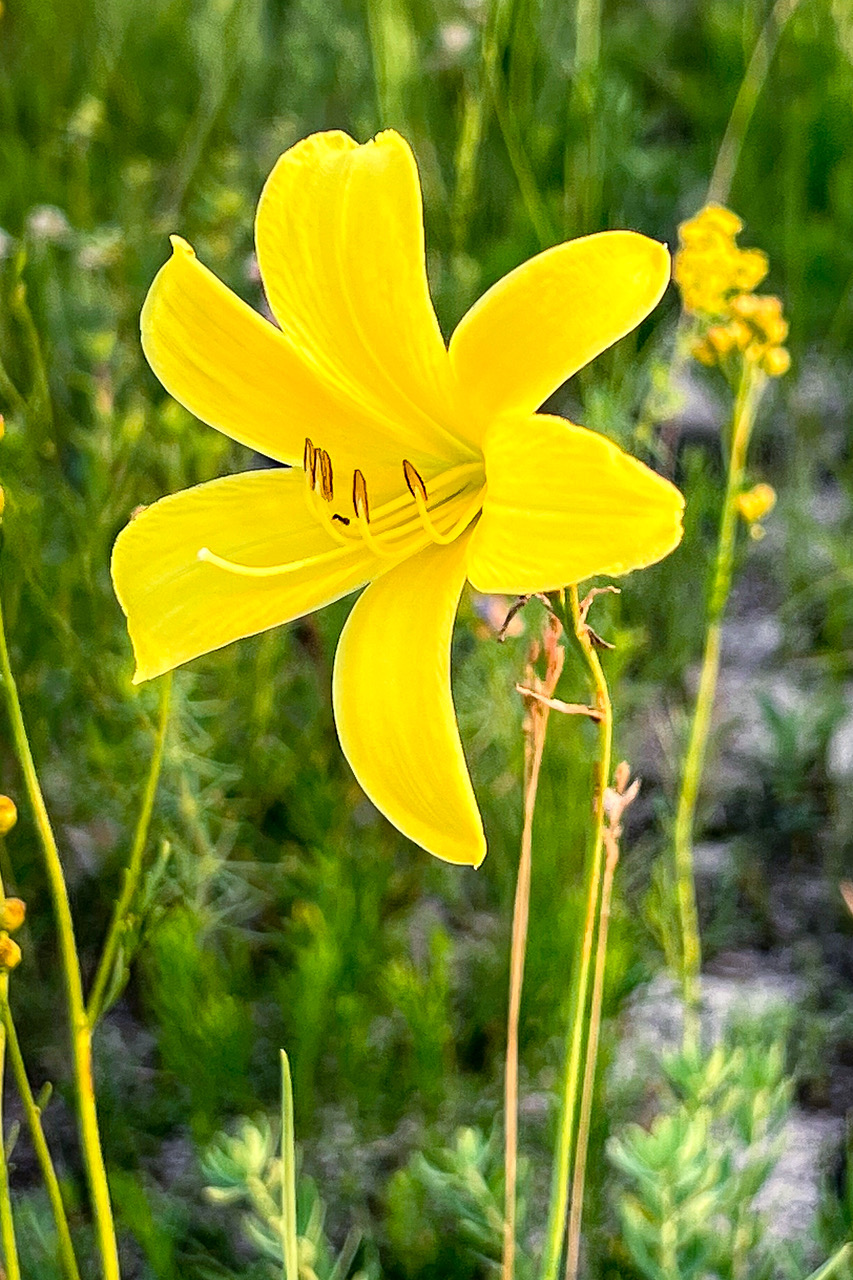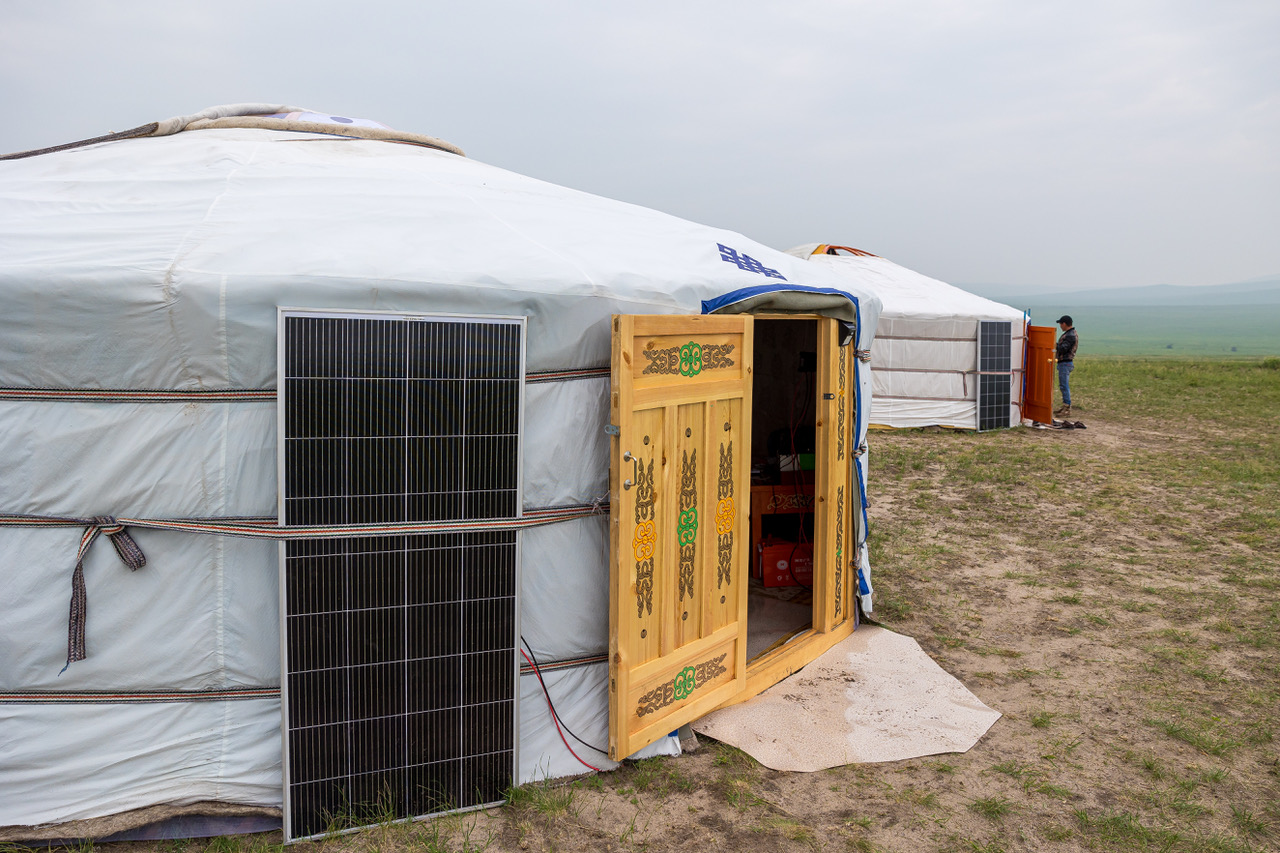
Aerial view of the base in the Valley of Monasteries, with the South Monastery Creek in the background. Photo by Miroslav Bobek
Whenever we release in western Mongolia Przewalski’s horses transported from Europe, I experience a feeling of satisfaction. Of course… However, I had a similar feeling also last week, when we returned to the East of Mongolia, the Valley of Monasteries, after half a year. Upon our arrival, we found two yurts and a container serving as a warehouse and kitchen already standing on a hill above the confluence of the Hook River and the Southern Monastery Creek, with the necessary sanitary facilities located nearby. Finally, something tangible! Thanks to Ganbaatar, who has worked for us since last year, the base for the future reintroduction of Przewalski’s horses has begun to emerge in the Valley of Monasteries!
One of the remarkable July flowers of the steppe: dwarf daylily (Hemerocallis minor). Photo by Miroslav Bobek

One of the remarkable July flowers of the steppe: dwarf daylily (Hemerocallis minor). Photo by Miroslav Bobek
Despite the advanced summer the steppe around the base was still full of flowers: yellow poppies, daylilies or cinquefoils, orange globeflowers, purple irises, or discretely whitish cudweeds. In this steppe we gradually started selecting the most suitable localities for the building of the reintroduction station and particularly for two pairs of enclosures, in both cases one large, with an area of 30 to 40 hectares, and the other smaller, about three hectares. Such a task may seem trivial in an endless landscape, but appearances are deceiving. Each enclosure should adjoin the water but must not include too large of an area of wetlands. There should be no steep slopes inside, but preferably no absolute plain either; the horses need small hills, where they can cool in the summer, and shallow depressions to hide in the winter. All enclosures need to be easy to inspect and maintain. And so on, and so on… We alternated in walking through the landscape and coming back to the yurt to the picture of the landscape, which we composed from dozens of shots taken by drone. Lukáš Divoký and David Broda located more and more points in the terrain and inside they plotted them into the picture, where they also projected ever more shapes and locations of enclosures, and I am afraid that sometimes they were losing a hope that we would be able to place everything above the confluence of the river and the creek. But in the end, we solved this puzzle!

The electricity for the base in the Valley of Monasteries is provided by solar panels. Also, the Internet works here. Photo by Miroslav Bobek
Other Czech and Mongolian colleagues were simultaneously engaged in research works. To be honest, I will probably never forget the joy with which professor Battur brought me a test tube with collected ticks. The purpose of the research is not only to have the Valley of Monasteries perfectly mapped and to be as well prepared as possible for the reintroduction of Przewalski’s horses, but also to be able to assess the changes which their return will bring to the landscape step by step. But this is still the music of a rather distant future. Before that, there is a lot of construction work to be done, which will be quite a hard nut to crack in this deserted and hardly accessible landscape, over a thousand kilometres from Ulaanbaatar.
Miroslav Bobek

